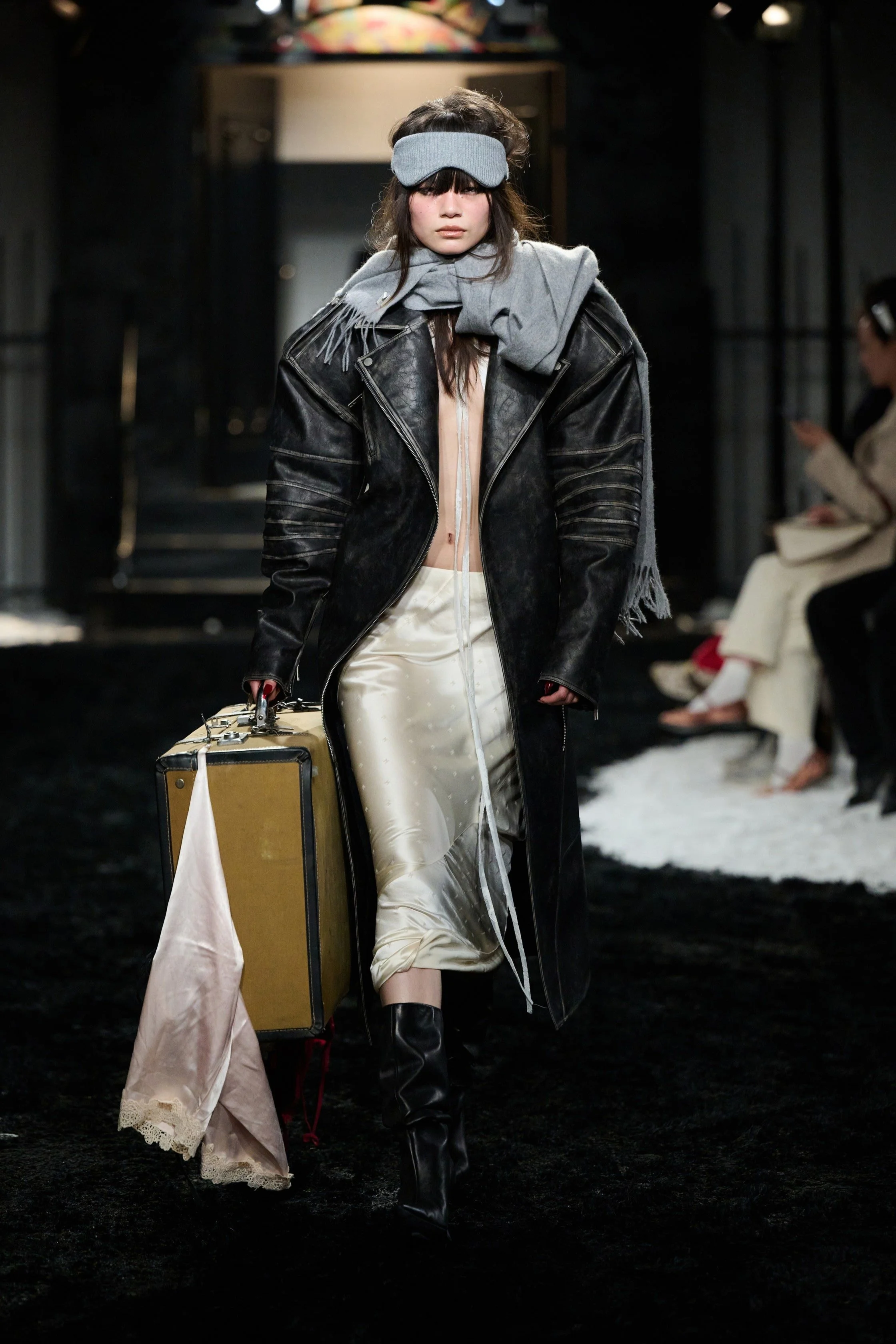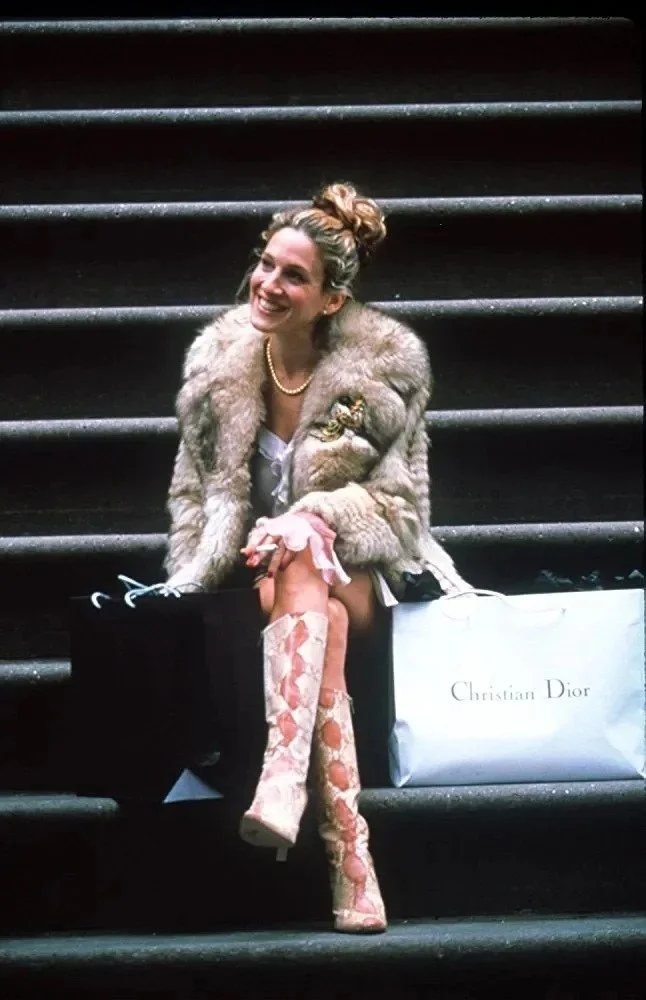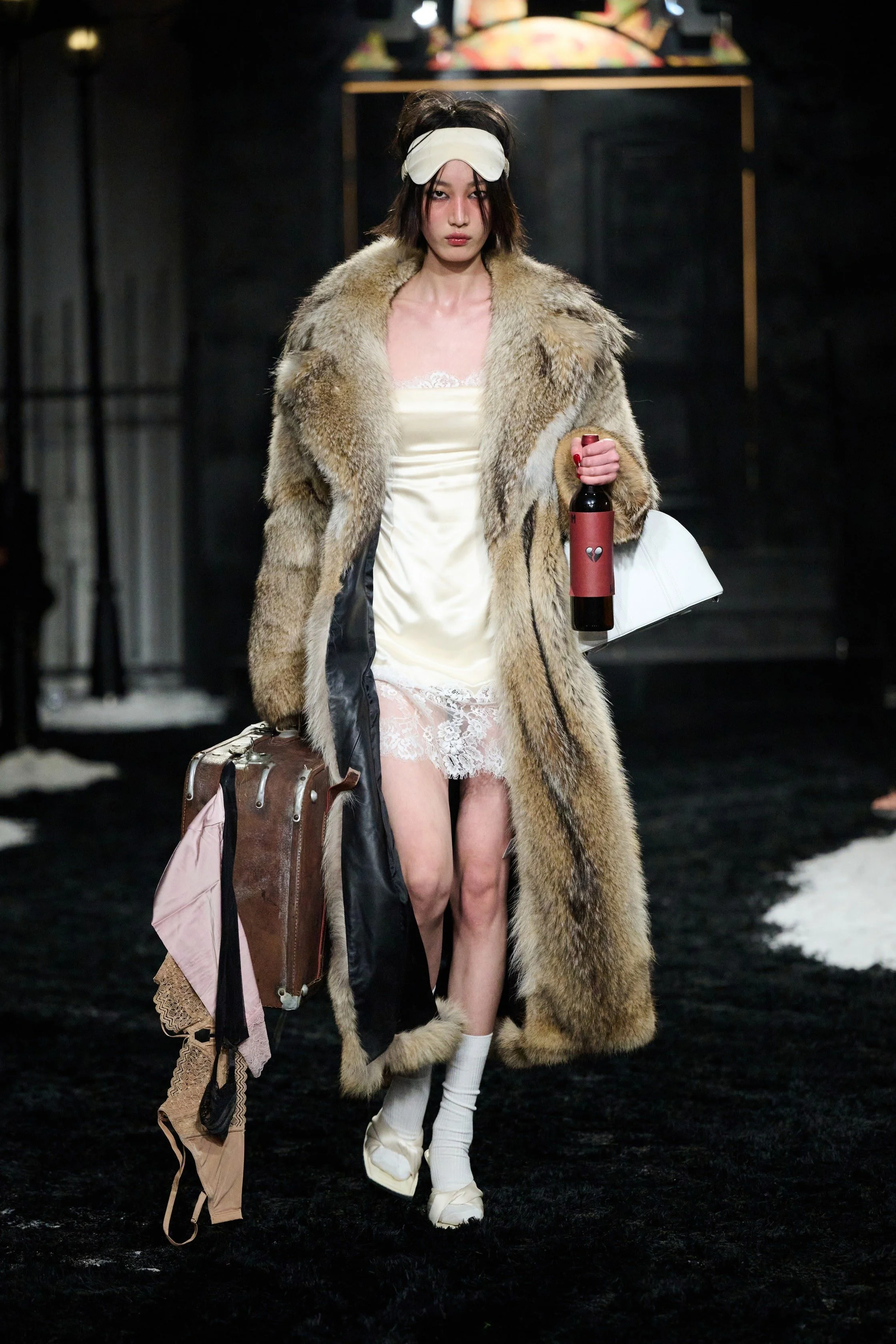Youthful Chaos and Heartbreak chic : a sartorial expression of messiness in Mark Gong F/W 24
The heroine on Mark Gong’s runway can be a hopeless romantic drunk on love and equally capable of madly despairing.
Image credits: Mark Gong via Vogue.
Christian Dior once said that designing clothes is to design a woman’s dream — an idea that was reflected by Mark Gong on the Fall 2024 runway. During Shanghai Fashion Week, Gong gave us 48 looks, each retelling a story of a muse of his own. In this particular collection, he is citing the main heroine of Sex and The City, Carrie Bradshaw, as inspiration. Aside from her fashion moments, long-time watchers could never forget how lovable yet aggravating she was. But, as any main character would, she demonstrated moments of heroism. One instance that was especially relevant to the runway was a scene wherein Carrie visited Miranda during a snowstorm to comfort her following a breakup. This was a relatable moment for Gong, having gone through a breakup of his own. The collection ended up being about his real-life friends who supported him throughout those times. “The idea is that you save your messy self for your best friends and for inside your home, but here they are wearing it out,” he explained.
Conflicting emotions are inevitable while growing up as we often oscillate between the urge to be responsible and irresponsible. It’s a period marked with bad decisions, making the journey towards maturity a tumultuous process. Amidst the chaos, young women still have to confront the world and the harsh realities of life. This inner conflict was expressed sartorially by Mark Gong as each piece adorned on the model's body gives a sense of spontaneity which encapsulates the youthfulness that lingers in early adulthood. Semantically, each piece visualises the messiness and vulnerability that young women often find in themselves.
Enter the models: dubbed the ‘Heartbreak Club’ collection, they sported pyjamas, silk dresses, and fur coats alongside Gong’s signature cargo, denim suits, and mini dresses. Looks were styled to reminisce iconic outfits worn by Carrie Bradshaw, such as the plump fur coats draped over silk gowns throughout the series. The garments were made with primarily straight, oversized silhouettes that strategically revealed the model’s skin. An aura of recklessness was not only expressed through the clothes but also theatrically, as models walked as if they were drunk, falling and stumbling down the stairs — highlighting Gong’s notion of “wearing yourself out”.
Image credits: Getty Images
The show started with a twist, a black bra worn inside out paired with a black floral satin skirt, completed by a long greige fur coat with brown lining. The pieces are made with fabrics that sit lightly on the skin, clinging effortlessly to the model’s frame. Delicate sheers create a flowy silhouette, highlighting the motion that seemingly pulls the model’s body downward. The contrasting materiality is harmonised through the vertical dynamic of the body, creating a deliberate silhouette that plays with languidity.
This juxtaposition between the inner garments with heavy outerwear creates the impression that the model is trying to mask their vulnerability by layering armour to protect the body. The inner garments are made mostly with silk or sheer fabrics, barely covering their bodies if not for the heavy fur coats or structured wide jackets. Alternatively, some models have their faces obscured by Brenton hats, while others wear dramatic fur boots. These pieces — that conceal a part of the body — were fashioned to have a massive presence, taking the attention of viewers away from the model’s incoherent motion. In a sense, all these pieces express a unifying theme of fashioning the body to enforce defence. Even so, the sheerly covered body is exposed outwardly, expressing the naivety that such a momentary shield could never truly hide the vulnerable self.
Image credits: Mark Gong via Vogue.
Styling was only a part of Mark Gong’s ability as a designer, but ultimately, what made the show successful was the narrative conveyed by his scientific understanding of creating garments. Equipped with moodier colours alongside heavy oversized leather jackets and blazers, the models are presented as edgier versions of Carrie Bradshaw. The outerwear was made with a mean, wide shoulder structured to protrude outwards from the models' bodies. Formulating an exaggerated silhouette allows Gong to propel the emotional narrative of the show. Additionally, Gong showcases an understanding of materiality. Leather — a typically heavy masculine material, was tailored to unify it with the lightweight fabrics — the more feminine aspects of the collection. On the other hand, brittle fabrics such as silk and crepes were cut to perfection, making audiences forget the difficult nature of such material. A chunky leather jacket would not typically synergise with a pyjama, especially lingerie, but Gong has managed to decipher the code.
“This one,” he quipped about the one model who walked the runway presumably listening to a voice note about her best friend going back to her ex, “she’s just over it, but she still shows up.”
Image credits: Mark Gong via Vogue.
Fashion can be narratively driven, telling viewers stories by treating garments as art. The Heroine in Mark Gong’s runway celebrates youth. Through fashion, he demonstrates a narrative that visualises youth — the beauty of experiencing heartbreak, wasting potential and trying to keep things together. She can be a hopeless romantic drunk on love and equally as capable of madly despairing. However, her sensitivity also bestows the ability to deeply understand others. In life, one can be both the troublemaker and the one giving a helping hand — a dichotomy captured in Mark Gong’s work, ultimately reminding us that being young is art.




